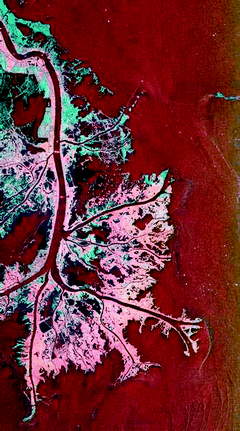In honor of Mina J. Bissell
Mary Helen
Barcellos-Hoff
Department of Radiation Oncology, New York University Langone School of Medicine, 566 First Ave, Floor 8th Room 819, Rusk Research, New York NY 10016, U. S. A.. E-mail: MHBarcellos-Hoff@nyumc.org
 Mary Helen Barcellos-Hoff | Mary Helen Barcellos-Hoff is Associate Editor and member of the Integrative Biology Board. She is a Professor in the Department of Radiation Oncology at the New York University Langone School of Medicine. As an undergraduate at the University of Chicago, she conducted neuroanatomy studies using electron microscopy. Mary Helen obtained her doctorate in Experimental Pathology at the University of California, San Francisco, for studies in cell interactions during brain cancer therapy, and postgraduate research at University of California, Berkeley on functional analysis of mammary lactation. With collaborators at Lawrence Berkeley National Laboratory she developed imaging bioinformatic tools for high throughput microscopy. The goal is a systems biology analysis of radiation effects and consequences that integrates image information and functional data. Her current research program at New York University focuses on how ionizing radiation alters multicellular interactions during cancer development. |
It is always a challenge to identify exactly the point at which the tide has turned, whether it is at the seashore or in science. In biology, the discovery of the triple-helix turned cancer biologists from the pathology of the organism to the pathological genome of the cancer cell. Innovative methods to identify cancer mutations generated a large body of data, like tiny drops of water, in greater detail and with ever increasing rapidity over the last half century to define the disease from the cell up. But as with all things, the tide has turned; once again the organism has gained prominence as the milieu determining cancer progression. The research of Mina J. Bissell has been a critical force to assess cancer in context with its microenvironment. Her research to define normal and the transition to malignancy in terms of multicellular interactions has motivated others to consider, and embrace, the complexity of cancer.
This issue of Integrative Biology embraces such complexity. New methodological advances to define the depth to which cancer cells intertwine and subvert normal tissue processes are the focus of this issue that honors the contribution and inspiration of research conducted by Dr Mina J. Bissell over nearly half a century. Like the sands rearranged with the tide, the multiplicity of critical tissue microenvironment components are barriers to malignancy. The perspective on cancer has shifted from a cellular disease to a tissue, disrupted by malignancy, shaped by both the malignant genome and the changing microenvironment.
Considering the action of proteases that modify and mold the structural proteins of the extracellular space, a new multiplex proteolytic activity matrix analysis (PrAMA) from the Lauffenburger laboratory (DOI: 10.1039/c0ib00083c) provides a global computational and experimental approach for real-time simultaneous determination of multiple metalloproteinase activities. And true to the goals of IBiology, these authors use this to demonstrate important biological insights by using live cell imaging of genetically engineered cells. Pathak and Kumar (DOI: 10.1039/c0ib00095g) also discuss how deepening understanding of microscale, biophysical interactions between tumor cells and matrix elements might trigger transitions by imposing restrictions on motility that underlies cancer invasion and metastasis. Likewise, the fundamental role of one matrix component, hyaluronan (HA), reviewed by Veiseh and Turley (DOI: 10.1039/c0ib00096e), in wound resolution and during cancer progression motivates the development of HA-based nanoprobes to image areas of active HA metabolism.
Enabling studies of cooperation among cells, the laboratory of David Beebe (DOI: 10.1039/c0ib00063a) provide a novel platform to study the acquisition of invasion while that of Sophie Lelièvre (DOI: 10.1039/c0ib00132e) has engineered a portion of a breast ductal system using microfluidic channels that mimic the branching morphogenesis during development. Taking a different computational approach to functional morphogenesis, Costes and colleagues (DOI: 10.1039/c0ib00092b) employ agent-based modeling of acinar morphogenesis in cultured cells to weigh the balance of proliferation and cell death. Their studies provide further evidence that perturbing cell–cell and cell–ECM communication determine these cellular behaviors. Indeed, malignancy could be considered a property of multicellularity rather than that of mis-regulated genomes. Communication is the focus of perspective articles that use population dynamics to drive insight into biological organization (Mian and Rose, DOI: 10.1039/c0ib00117a), slime mold morphogenesis (Nanjundiah and Sathe, DOI: 10.1039/c0ib00115e) and cancer evolution and genetics (Pérez-Losada et al., DOI: 10.1039/c0ib00094a).
These briefly noted topics underscore the breadth of the science published in this issue to honor Dr Bissell and her research career to date. Her commitment to innovative science is known to all who have read the insightful body of her work that range from mouse to woman, or who have heard her dynamic presentations that engage both public audiences and science students, fellows and senior researchers, or who share her passion that inspires us to wade further into cancer and complexity.
| This journal is © The Royal Society of Chemistry 2011 |

